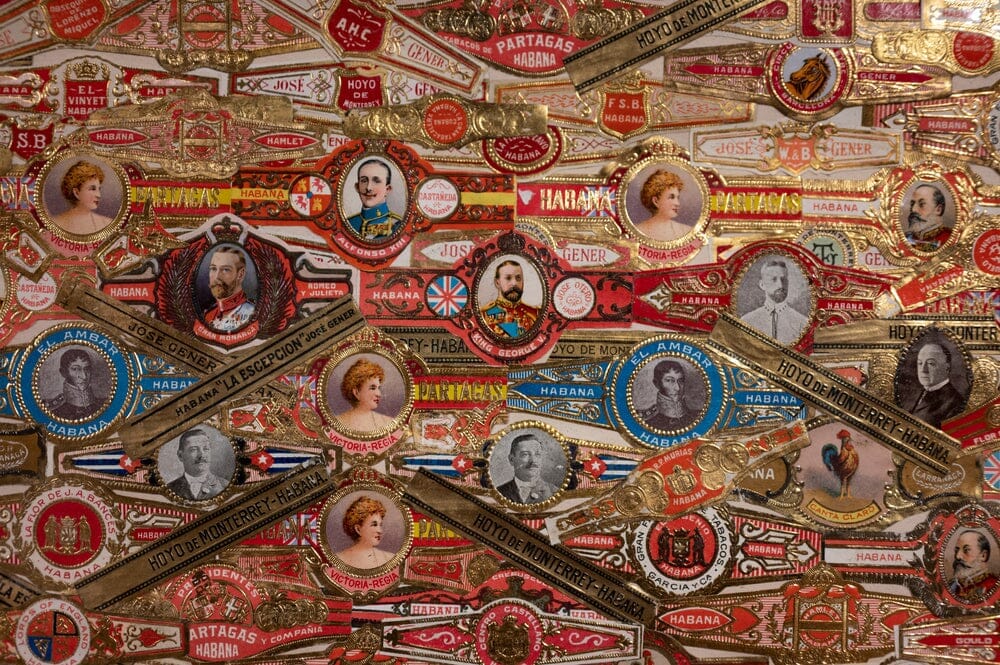
Cigar Brand Logos and Their Evolution Over the Years
|
|
Time to read 4 min
Your cart is currently empty.
Shop our products|
|
Time to read 4 min
Cigar logos are more than just symbols; they are signs of a tradition that has lasted for centuries. These logos represent the rich history, branding, and culture of the cigar industry. Over a thousand years, these logos have changed in response to market shifts, people’s preferences, and the ever-expanding world of cigar culture. Let's get on a journey through time to uncover their history, innovation, and lasting impact.
In the distant past, cigar logos were basic and served one purpose: to tell one brand of cigar from another. These early logos were straightforward and only meant to make a brand easy to recognize. During this time, logos were crucial for making a brand stand out in the growing cigar industry. Cigar production was often a localized craft, and as cigars began to gain popularity, distinguishing one brand from another became essential.
The logos during this period consisted of simple marks, often incorporating the brand name or a basic image related to the brand. These early logos might not have been elaborate, but they laid the foundation for the role cigar logos would play in the industry's future. They were the first step in creating a visual identity for cigar brands, setting the stage for the evolution to come.
The late 1800s and early 1900s marked a significant turning point in the history of cigar logos. This era was characterized by artistic expression and creativity. Manufacturers recognized the power of branding through visual appeal and worked with skilled artists to create intricate designs that would grace their cigar boxes.
These logos were a feast for the eyes, with vibrant colors, captivating themes, and detailed illustrations. They transformed cigar boxes into miniature art pieces, making them as much a pleasure to look at as the cigars were to smoke. The artists of this era drew inspiration from a wide range of sources, from serene landscapes to mythical creatures, showcasing diverse art styles from that golden age.
Cigar boxes during this time became collectors' items not just for their contents but also for the exquisite artwork that adorned them. Manufacturers understood that these logos had the power to attract customers, not only because of the cigars' quality but also because of the sheer beauty of their packaging.
Cigar logos have always been reflective of the culture and trends of their time. During the 1800s and early 1900s, significant cultural movements and historical events left their mark on these logos. Nationalism was on the rise, and this patriotic fervor found its way into cigar branding, what with logos featuring national flags and symbols.
Also, the Art Nouveau and Art Deco styles, characterized by intricate designs and graceful curves, influenced many cigar logos. These styles were a reflection of the broader artistic movements of the time and were incorporated into cigar branding to make a statement about the brand's elegance and sophistication.
Popular culture also played a role in shaping cigar logos. Themes and characters from literature, theater, and music found their way onto cigar boxes, connecting the world of cigars with the broader cultural landscape. These influences created a dynamic and ever-changing canvas for cigar logo designers to work with.
As technology advanced, so did the techniques for printing cigar logos. Innovations like lithography and offset printing revolutionized the way logos were made. Lithography, in particular, allowed for intricate and colorful designs that were previously impossible to achieve. It was a game-changer for the cigar industry, as it enabled the mass production of beautifully detailed labels.
These advancements not only made cigar logos more visually appealing but also more accessible to a broader audience. Cigars were no longer something you smoked; they assumed artistic connotations and consumers began appreciating not only the quality of the cigar but also the entire attractive packaging.
In modern times, cigar logos continue to evolve with newer and newer techniques to make them more visually appealing. Foil stamp printing and embossing have become popular methods for adding sophistication to cigar logos. Foil stamping brings a touch of class, with its shimmering metallic accents, while embossing adds texture and depth to the design.
These techniques elevate cigar logos to a new level of artistry. They create memorable logos that honor craftsmanship and prestige and draw discerning cigar enthusiasts who enjoy all things aesthetic.
From simple tags to intricate works of art, cigar logos have come a long way. This journey through history shows how logos have changed with the times. Cigar logos don't just represent brands; they're an integral part of the cigar culture and industry's story.
They have evolved from basic identification marks to expressions of art, culture, and technology. These logos have mirrored cultural shifts, embraced technological innovations, and added elegance to the world of cigars. When we look at these logos, we see not only design evolution but also a timeless tradition that has lasted for a thousand years. They are a bridge between the past and the present, connecting cigar aficionados today with the rich heritage of those who enjoyed cigars centuries ago.
As we celebrate the history of cigar logos, we also need to look ahead. The cigar industry continues to evolve, and with it, cigar logos will evolve too. Boutique cigar companies are emerging, bringing with them fresh ideas and branding to the industry. In the handmade premium cigar market, consumers can expect to see more new and exciting brands that push the boundaries of design and creativity. The good news is even as they add their creative angle to the ongoing story, they also strive to preserve the rich legacy of cigar logos.